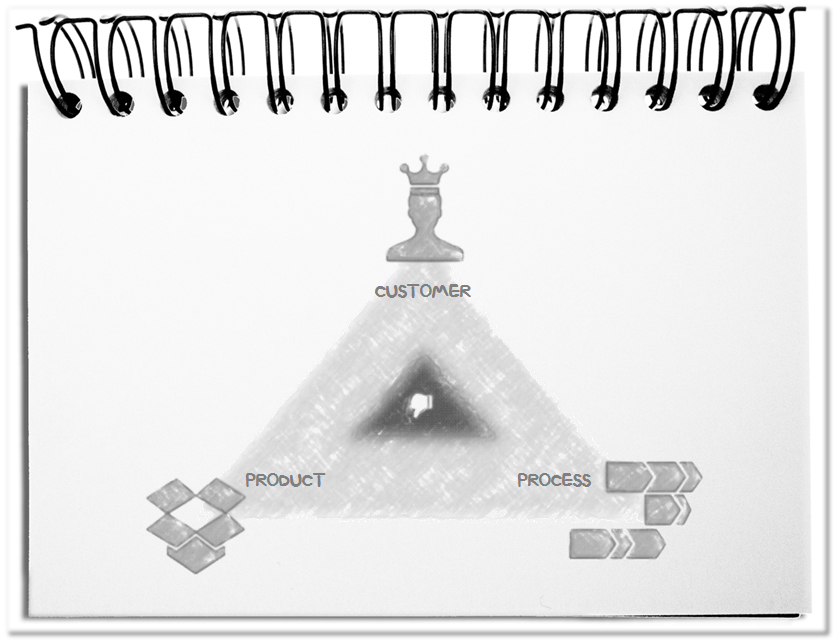Wheels first appeared on a Sumerian drinking cup as early as 5 millennia ago. The wheel was not known in America and Australia until the Europeans brought it in. The outer surface has always the same distance from the center and serves one purpose, namely to be round. Thus, the wheel offers the revolutionary property of being able to roll – and it is getting better and better over the millennia. Only in combination with other parts, besides the beauty of the wheel, its far-reaching benefits are revealed – especially the transport of goods and people. Is the roundness enough or does it need more for creating an effect?
Diverse purposes make a higher sense in the interaction with other things.
- The purpose
The raison d’être is the reason for the existence of something or someone. The purpose of a wheel, i.e. being round, has inspired inventors to further develop the rounding and construction again and again, up to ideas like the spokeless wheel in the Cyclotron.
In the company, delivers the purpose the answer to the question Why does the business exist? – It provides the polar star of the organization, which ensures that the leaders and the employees develop their decisions and actions in a common direction. If the actual events no longer fit the common purpose, the efforts of the many activities mutually rescind each other and the enterprise loses its momentum.
On the one hand, an assignment consists of the mission, the question What has to be done? and, on the other hand, of the purpose, the Why? – Therewith it is not only clear, what to focus on, but you also get reasons for developing passion. You not only learn how to saw, screw and sew, but you also develop a yearning for the vastness of the sea – while building a boat. - The purpose of the purposes
The example of the wheel shows that the purpose can be very special – like flawless roundness. Impact is achieved when the wheel is connected to other parts that also have a purpose in its own right – the load compartment, the axle, the drawbar, the cab, etc. And thus a vehicle evolves that can transport goods and people from A to B. The overarching purpose arises from several ones on the higher level – for example, the transport from A to B. If you add a cannon to the vehicle and the chassis is made bulletproof, we get a tank that is used as a weapon in battle. As soon as weapons are used in an attack, we are in a warlike conflict with the purpose to win.
This nesting of purposes is particularly confusing, if they are not openly stated. Again, if the purposes at the different levels do not fit together, they undermine each other and generate idle performance. - Means to an end
The speed with which the purpose is sought determines the means required. These are the resources needed along the way: e.g. people, materials, finances, buildings, equipment, logistics, etc. Since resources are always limited and everyone is seeking for the scarce resources, it is always necessary to consider, where it is most useful.
As soon as a purpose is merged with a greater one, it becomes a means to the superordinate one. The means always have an additional, separate purpose that is incorporated into the overall purpose. - Unintended purposes
However, the activities do not only lead to the desired results – for example, when a truck becomes a weapon by being turned into a military mount. Often, effects occur that are not intended and in the worst case have not even been foreseen. These unintended consequences have the disadvantage that the original purpose fades into the background and the new consumes the sparse resources and you suddenly have responsibility for something that you never wanted.
The unintended consequences are the surprises that make the best plan obsolete. For this reason, unintended side effects should always be taken into account, when considering the purpose, as they may have a major impact.
Bottom line: The purpose is an important aspect of all action. Especially in business, it offers a great boost, as the parties involved draw from it their intrinsic motivation for the realization. The difficulty lies in the multiplicity of purposes that clash and result in unforeseen effects. Different purposes are competing with each other at the same and different levels. The overarching purpose is the guiding star that shows the direction to those involved. Taking into account the available resources, the probability increases that the desired results will be achieved. If you then look beyond the box, you quickly recognize obvious, unintended purposes to which you should react with appropriate measures. Perhaps it is now easier to understand how important it is to consciously consider the purposes, their means and the unintended consequences.


